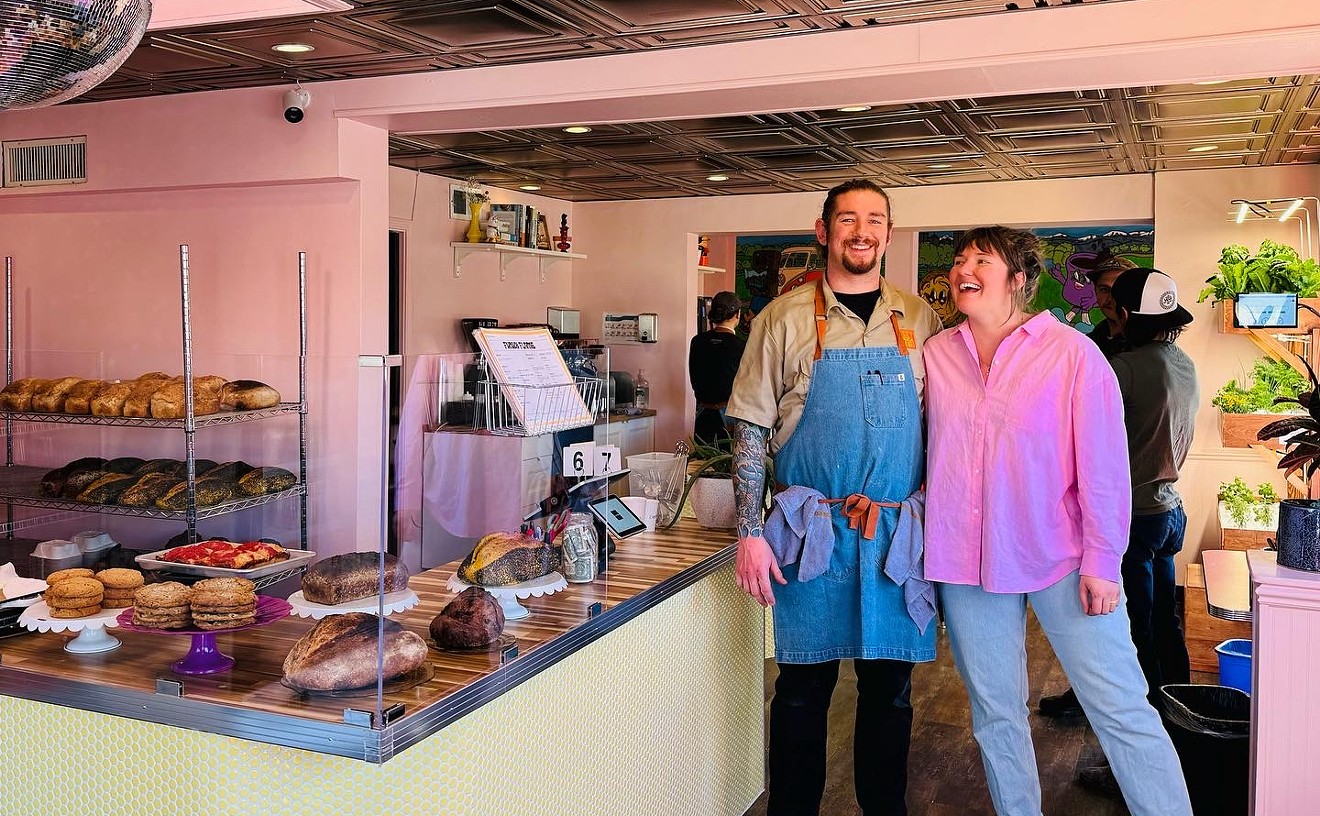The restaurant garden is so trendy, the concept is almost becoming commonplace. Potager has a garden. So does Colterra. Bistro One and Root Down plan rooftop gardens this spring.
But gardens have their limitations. In a garden, you can grow fruit, herbs and vegetables.You can rep these to the public, use them in the kitchen. But you'll never produce one thing in a garden: protein.
Americans put oh-so-much stock in proteins because we put oh-so-much protein into ourselves. This isn't necessarily a bad thing; nothing makes me feel manlier than a porterhouse the size of a toilet seat. But when you're concerned with both green cuisine and protein, how do you fuse sustainability with quality?
Maybe by having your chef grow the beef before he puts it on your plate.
Allow me to introduce you to chef Joseph Wrede of the Old Blinking Light at 9344 Dorchester Street in Highlands Ranch. Chef Wrede -- or 'JoChef', as he's known -- was named one of America's 10 Best New Chefs in 2000 by Food and Wine. That's for his work in Taos, where he and business partner Mike Yaccino set up the original Old Blinking Light -- a catering company, bakery and fine-dining restaurant all in one.
Yaccino's wife's family has a cattle ranch near Taos that hadn't been used much, so Wrede and Yaccino did what any restaurateurs would do with some open land: They bought six Blonde d'Aquitaine cattle and started feeding them grass. Feeding them grass for 85 days, then finishing them on a corn soy mix (for a little extra intramuscular fat). And then they took them to slaughter -- or "harvest," as it's called.
"We love the aspect of it being locally produced," Yaccino explained. "And as opposed to a commercial beef production, our calves have never traveled more than 150 miles to be raised and then slaughtered. Another thing we love about it was seeing the process and knowingly intimately what was happening, knowing from start to finish. It's pretty cool in that it's so humane, and done cleanly. It was non-traumatic, professional and efficient, not anything like The Jungle by Upton Sinclair."
Wrede elaborated on the experience, talking about how it's important to respect food if we're to truly enjoy it. Just because harvesting cattle may sound more gruesome than
harvesting carrots doesn't mean that it doesn't t deserve care and attention, too.
Here is his incredibly detailed account of the process: "We brought the cows up to a very skilled butcher in a small shop. The cows didn't seem to be startled by the experience. They brought them into the room, one at a time, slammed down the door, put them in a pen, and it startled all of us, but the cow didn't seem to be terribly freaked out, it was kind of curious. They lived pretty safe in the environment in which they were raised. The butcher then takes a gun that goes on top of the head, a kind of bolt whacks them. The cows are close to 1000 pounds and I've never seen anything hit the ground faster. If not dead, the cow was definitely down for good.
"There was still some movement in the legs, but the cow doesn't show much emotion. The only thing that's not startling to us is that the butchers are very cool, there is no emotion out of them. They open the pen, tie the legs, hoist the cow and cut the cow's neck vertically and a lot of blood comes out. The cow, still having some tics, gets hoisted up and they get down to business. They cut around the collar bone, taking the head off -- which goes into a crucible and the USDA arbiter checks the lymph nodes to see if anything abnormal is going on. He removes the brain, makes sure everything is good, then tells them to proceed.
"In the meantime, the guys are taking the skin off completely. They remove all of the stomach, and the inspector checks it. They then pull the cows hanging straight in the air and take off the skin. They take an electrical saw, cut it into half and put it on a hook...
"It was so unsentimental, and a little disturbing only in the sense that you're seeing something that was once alive and is now dead," he continued. "Is a little bit thought-provoking. I'm feeling very inspired by the whole process, it was a stimulating experience.
"We will dry age them for fourteen days, depends on the exact fat content. I've been documenting this, writing a story trying to figure out why I'm doing this."
But he can't take too long to figure it out. Because on February 27, which happens to be today, Wrede told me that they'd start writing recipes and actually cooking their beef. "As a chef, you work with the product; you bring pleasure through the plate," he concluded. "Appreciate the product, be constantly in search of inspiration, and the more involved, the more inspiration you can find."
You'll soon be able to experience some of Wrede's inspired cuisine first-hand; he's coming back to town to put in extra time at the Old Blinking Light here. He plans to reveal a new menu sometime next week, with the beef featured prominently.
Wrede is still running the numbers, but he said that in addition to creating beef that's of higher quality, growing your own in a sustainable way may be cheaper, too. That's a trend I could get behind.









